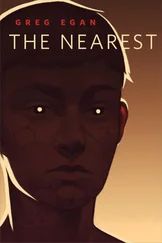He grabbed the branch and raised himself up, then hooked his feet around it and hung sloth-like for a while before figuring out how to right himself. It was a clumsy start, but once he was standing squarely on the branch, with a firm grip on the next one up, he was elated. The scent of the bark, the feel of it against his soles, was utterly familiar; even the view straight across into the other trees was far closer to anything he remembered than the view from the ground. He glanced down at Grant, not wanting to lose perspective, not wanting to be drawn back too strongly.
She shaded her eyes and looked up at him. ‘Be careful!’
He took a few steps along the branch, feeling it flex, trying to recalibrate his old instincts for his adult weight. He called down, ‘I promise you, I have no intention of breaking my neck for a caterpillar.’
He scoured the clusters of leaves hanging around him for signs of larval feeding, but there was nothing. He climbed higher. Fruit pigeons fled as he approached, a rush of air and a blur of motion. There were foul-smelling beetles on the trunk, but they scurried away from the repellent. There’d been pythons in the trees once, but even the lowest branches wouldn’t have taken the weight of anything remotely like the one he’d met in the mangrove swamp; as long as he didn’t panic and fall to his death, he probably had nothing to fear from its tree-dwelling cousins. Assuming they hadn’t acquired venom.
Twenty metres up, Prabir found something hanging from a slender branch. At first glance he’d mistaken it for a nutmeg fruit, but then a hint of unexpected structure had made him look again. When he was close enough to examine it properly, he found a butterfly, wings folded, suspended from the branch. It had to be a pupa, but it looked more like a tiny sleeping bat than an insect about to emerge from metamorphosis — and it still looked more like a nutmeg fruit than anything else. He touched it warily; it even felt like a nutmeg fruit.
He took out his notepad and recorded some vision, to document the attachment method before he broke the pupa free. The silk girdle around the bulk of the insect was virtually undetectable, the colour matched so well; the short length anchoring it to the branch looked exactly like a stalk. He sent the images down to Grant, and spoke to her through the notepad; it was easier than shouting.
‘What do you make of that? Pretty good camouflage, at the risk of being eaten by mistake.’
‘Maybe they smell bad to the fruit pigeons,’ Grant suggested.
‘Why not just — oh, forget it.’ Whatever anything did, why not do it differently? It was frozen history, not rational design. He broke the pupa free, and dropped it in his backpack. ‘I’ll go up one more level, just to see if there are any larvae.’
‘Are you sure it’ll take your weight?’
The next branch above him was barely chest high now. He wrapped his arms around it and lifted his feet off the one below. ‘Yes, I’m sure.’
He clambered up. He had a firm hold and a secure footing, but he could feel the top of the tree swaying, and the branches around him had thinned enough to make him feel exposed. Looking sideways through the forest at this level, the distant branches appeared uncannily like the struts for some elaborate geodesic folly. Maybe the Stetsoned entrepreneurs who’d followed the expedition down from Ambon could anchor a perspex roof to all this scaffolding, and turn the whole island into an exhibition centre.
He looked down and saw the ruins of the kampung.
A wave of vertigo swept over him, but he kept his grip on the branch beside him. The centre of the kampung had been reclaimed by the forest, but the trees couldn’t quite obscure the roofs of the huts: the matt-grey photovoltaic surface was still visible through a thin layer of creepers. The buildings had all become badly skewed, but none of them appeared to have collapsed completely. The six huts had been arranged in a regular hexagon, and in their current state he couldn’t tell them apart; with the path from the beach erased there were no cues to enable him to orient the view.
He looked away, remembering his purpose. There wasn’t much foliage around him, but he examined it dutifully. Then he spoke into his notepad.
‘There’s nothing else here. I’m coming down.’
Three more trees yielded five more pupae, but still no sign of the larval stage. It was mid-afternoon; Grant decided there was no point looking further. Prabir was dripping with sweat, and itching from all the contact with bark and sap. When they reached the beach, he handed his samples to Grant and swam out to the reef and back. After the heat of the forest, the water was glorious beyond belief.
He collected his clothes from the beach and waded back to the boat. As he climbed up on to the deck, Grant met him with the latest news from Brazil. ‘They’ve copied whole, purified pigeon chromosomes, using just SPP,’ she said. ‘And the error rate was the same as mine, for the cultured cells.’
It took Prabir a moment to interpret this result. ‘So there is no second protein after all?’
‘Apparently not,’ Grant concurred. ‘SPP alone in a test tube does just as good a job as SPP in an intact cell, if and only if the sequence being copied is the same. Which shows that these changes aren’t errors at all. Or at least, they’re not just random copying mistakes. They must depend in some way on the sequence itself.’
Prabir pondered this. ‘The pigeon genome has probably been copied in the presence of SPP dozens of times. So whatever transformation SPP causes must be convergent: the genome must change less and less with each iteration, until by now it’s virtually stable under the process.’
Grant nodded. ‘Whereas there’s no reason at all why the test sequences they first tried copying would have been stable. Randomly chosen input sequences would have undergone apparently random changes.’
Prabir had a minor epiphany. ‘And all the different fruit pigeons on Banda that ended up looking identical — the process must also be convergent for sufficiently similar genomes. Not only is there a stable endpoint for a given starting point, but similar starting points — closely related species — get dragged towards the same endpoint.’ He beamed with delight. ‘It all makes sense!’
Grant was pleased, but slightly less rapturous. ‘Except we still don’t know what SPP actually does, or how it’s doing it.’
‘But the Brazilians have all the information they need to crack this now, don’t they? They just have to look more closely at their model.’
‘Maybe. For a molecule as large as a protein you can never solve the equations for its shape and binding properties exactly, and it can be hard to choose a set of approximations that only cause trivial discrepancies. They’ve already tried simulating the pigeon chromosome being copied by SPP, and the simulation produced exactly the same error rate as for any other sequence.’
Prabir winced. ‘So their model has just proved that it’s missing the most important subtlety of the real protein.’
Grant didn’t see it quite so bleakly. ‘Missing it now, but they might yet be able to capture it with a little fine-tuning. At least they know what they’re aiming for, what they need to get right.’
Prabir said, ‘OK. So what do we do next?’ Grant had been posting all their results on the net, stating precisely where they’d been collecting their samples; the expedition biologists would already know that there was no need for anyone else to come here. So long as Grant didn’t cut corners.
She said, ‘I’ll have a proper look at these pupae, see what that tells us. I don’t know whether it’s worth going back to hunt for the larvae; I mean, the life cycle is of interest in itself, but larvae don’t make germ cells.’
Читать дальше
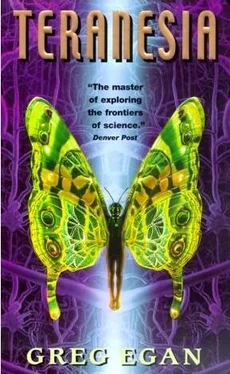
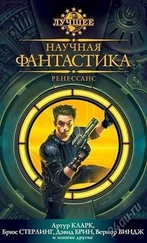
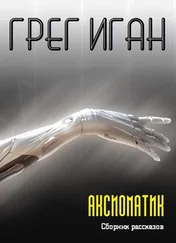


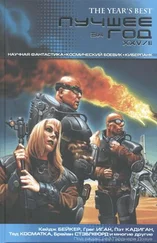


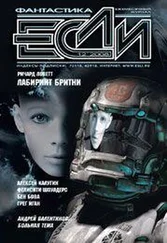

![Грег Иган - Рассказы [компиляция]](/books/419837/greg-igan-rasskazy-kompilyaciya-thumb.webp)
